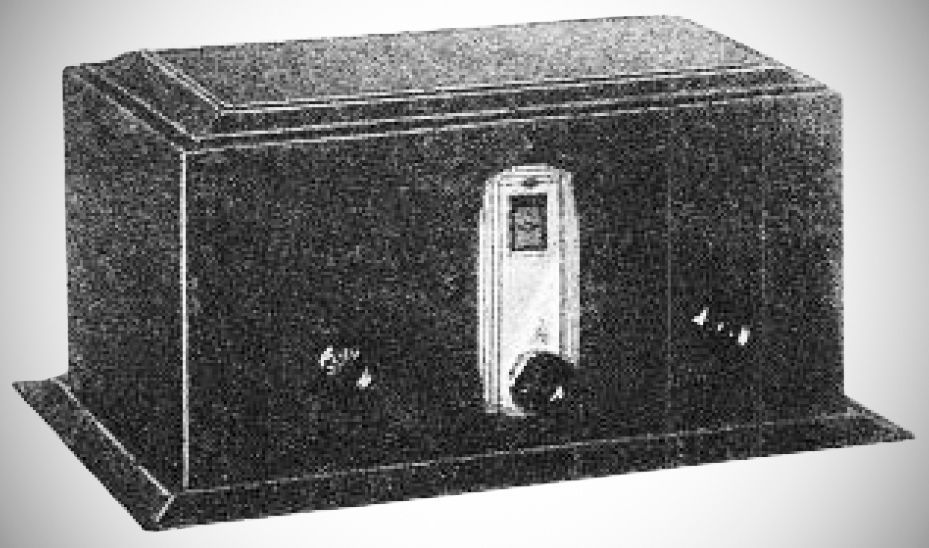Note
Radio News, Jul 1930, p. 79.
QST, Aug 1930, p. 81.
Radio News, Aug 1930, p. 171.
QST, Sep 1930, p. 8. (with prices)
Radio News, Jun 1931, p. 1107 (special band spreading coils)
Radio News, Jul 1931, p. 67. (new improved, 9–750 meters)
Radio News, Aug, 1931, p. 155. (9–850 meters)
Radio News, Jan 1932, p. 617. (inside photo)
Radio News, Feb 1932, p. 715.
Battery version, $75.00
AC version, $79.50 (without power supply)
Power supply, $34.50
Announced in the July 1930 issue of Radio News, but not actually called the SW-5 until the following month. Advertised as an "all AC Thrill Box" ( the SW-4 was AC operated also), but was also available in a battery version. National said, "a laboratory product for
general." Designed by James Millen in collaboration with Robert S. Kruse.
The SW-5 represents a general refinement of the SW-4, with much of the emphasis placed on the elimination of hum. The advertised bullet points were these:
-- As easily tuned as a broadcast receiver.
-- Complete A.C. operation.
-- No A.C. hum.
-- Double screen grid.
-- Single dial tuning.
-- Push-pull audio loud speaker [operation].
-- Readily adjusted for wide spread of different amateur hands.
-- Projection dialing facilitates accurate logging.
-- Special tuning condensers and dial construction eliminates "clicking" on higher frequencies.
Interestingly, the original SW-5 did not cover the AM broadcast band, as did the SW-4, instead covering only 2.6–21.4 MHz. A revision in July 1931 extended the frequency coverage both up and down, from 400 kHz–30 MHz. In August an ad claimed coverage down to 350 kHz. This may not have been an actual change, just a refinement of the earlier figure.
In the June, 1930 issue of Radio News, Millen and Kruse describe the circuit this way:
"The circuit uses a tuned screen-grid radio-frequency stage, in which provision has been made, if desired, for the use of the heater type pentode tube, where slight additional gain at the expense of selectivity is wanted; a screen-grid regenerative detector; a two-stage transformer-coupled audio amplifier, employing push-pull in the second stage and with provision for plugging phones into the output of the first stage when desired; and a separate power pack especially designed for short-wave work."
They go on to describe, in considerable detail, their efforts to eliminate hum from the SW-5. It is worth quoting a few lines here:
"...the circuit diagram should not be taken too seriously, as all the circuit diagrams in the world mean little, if anything, when it comes to shortwave receivers. In fact, the circuit of the new receiver...is to all appearances quite conventional in every way.
When dealing with short waves, it is not so much the diagram which counts, but the manner in which the circuit is used. Little things, like the order in which the tube heaters are wired, the insulation of the bearings in the variable condensers. the type of material used in the
coil forms, and so on without end, is what makes the difference between successful design and one which is a failure."
Also available in a battery version.
SPECIAL BAND SPREADING COILS
Introduced in June, 1931 (Radio News, Jun 1931, p. 1107)
NEW IMPROVED
"227 push-pull model"
Introduced in July, 1931 (Radio News, Jul 1931, p. 67)
SPECIAL BROADCAST RECEIVING MODEL
"245 push-pull model for greater volume" Radio News, Jan 1932, p. 617
Introduced in July, 1931 (Radio News, Jul 1931, p. 67)
Five variations of the SW-5 were produced. The changes mostly revolved around different tube types. including:
Tubes: (2) 58, (1) 56, (2) 45
Tubes: (2) 24, (3) 27 -- with two variations.
Tubes: (2) 32, (1) 30, (2) 31 -- with two variations.
Requires National's "Velvet B" power supply.
The battery version uses: (2) UX-232, (1) UX-230, (2) UX-231
+135
+67
+22.5
filament
References
"Analysis of AC Operated Shortwave Receiver Design." Radio News, Jun 1930, p. 1101.
Technical Description. Radio News, Oct 1930, p. 327.
"Solving the Band Spread Problem" Radio News, May 1931, p. 996.
